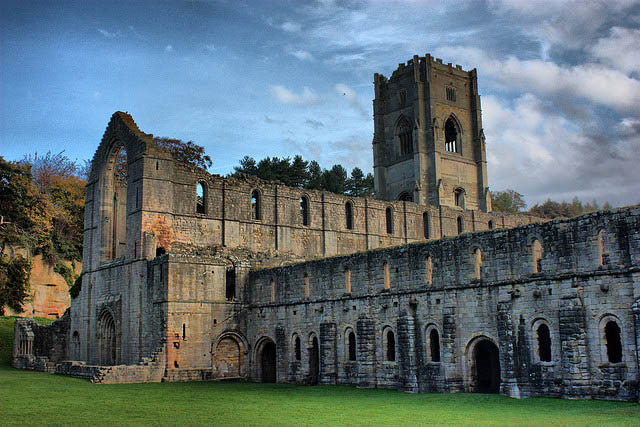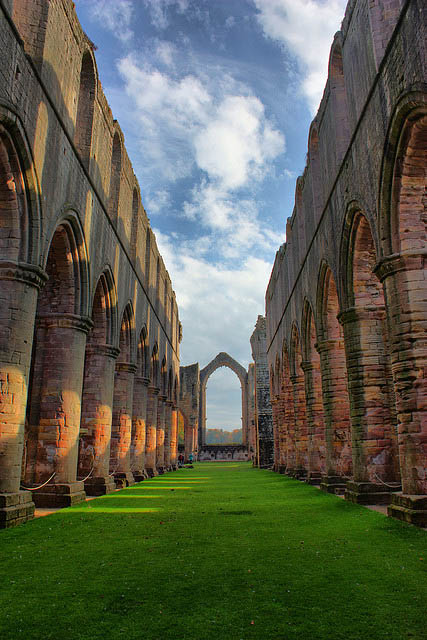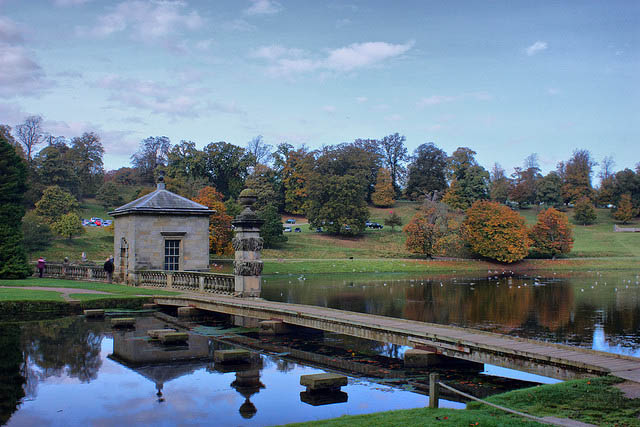Studley Royal Park including the Ruins of Fountains Abbey
Peble Jeine
A striking landscape was created around the ruins of the Cistercian Fountains Abbey and Fountains Hall Castle, in Yorkshire. The 18th-century landscaping, gardens and canal, the 19th-century plantations and vistas, and the neo-Gothic castle of Studley Royal Park, make this an outstanding site. Studley Royal Park, including the ruins of Fountains Abbey, combines into one harmonious whole buildings, gardens and landscapes constructed over a period of 800 years. All, important in their own right, have been integrated into a continuous landscape of exceptional merit and beauty.
 |
| Ruins of Fountains Abbey |
Studley Royal: one of the few great 18th Century ‘green gardens’ to survive substantially in its original form: arguably the most spectacular water garden in England. The landscape garden is an outstanding example of the development of the ‘English’ garden style throughout the 18th century, which influenced the rest of Europe. The garden contains canals and ponds, cascades, lawns and hedges, with elegant temples and statues used as eye-catchers. The layout of the gardens is determined by the form of the natural landscape, rather than a design that is imposed upon it. The Aislabies’ design survives substantially in its original form.
Fountains Abbey ruins: a key element in the garden scheme, providing the spectacular culmination to the principal vista, but also of outstanding importance in its own right. It is one of the few Cistercian houses surviving from the 12th Century and provides an unrivalled picture of a great religious house in all its parts. Fountains Abbey, founded in 1132, soon became one of the largest and richest Cistercian abbeys in Britain, before being closed by Henry VIII in 1539 during the Dissolution of the Monasteries. It was partially demolished soon after.
Jacobean Fountains Hall: an outstanding example of a building of its period and partially built with stone from the Abbey. It has a distinctive Elizabethan facade and is enhanced by a formal garden with shaped hedges. The interior of the Hall has been adapted for successive uses, including a courthouse.
St. Mary’s Church: an outstanding example of High Victorian Gothic architecture by one of its leading exponents, William Burges, in 1871, and considered to be one of his finest works. A building of importance in its own right, it has also been successfully integrated into the landscape of the Park. The church is one of a pair: its twin is Christ the Consoler at Skelton-on-Ure. They were both designed by Burges and built using the same craftsmen.
Studley Royal Park including the ruins of Fountains Abbey owes its originality and striking beauty to the fact that a humanised landscape was created around the largest medieval ruins in the United Kingdom. The use of these features, combined with the planning of the water garden itself, is a true masterpiece of human creative genius.
Combining the remains of the richest abbey in England, the Jacobean Fountains Hall, and Burgess’s miniature neo-Gothic masterpiece of St Mary’s, with the water gardens and deer park into one harmonious whole, Studley Royal Park including the ruins of Fountains Abbey illustrates the power of medieval monasticism, and the taste and wealth of the European upper classes in the 18th century.
























Enter your first comment!